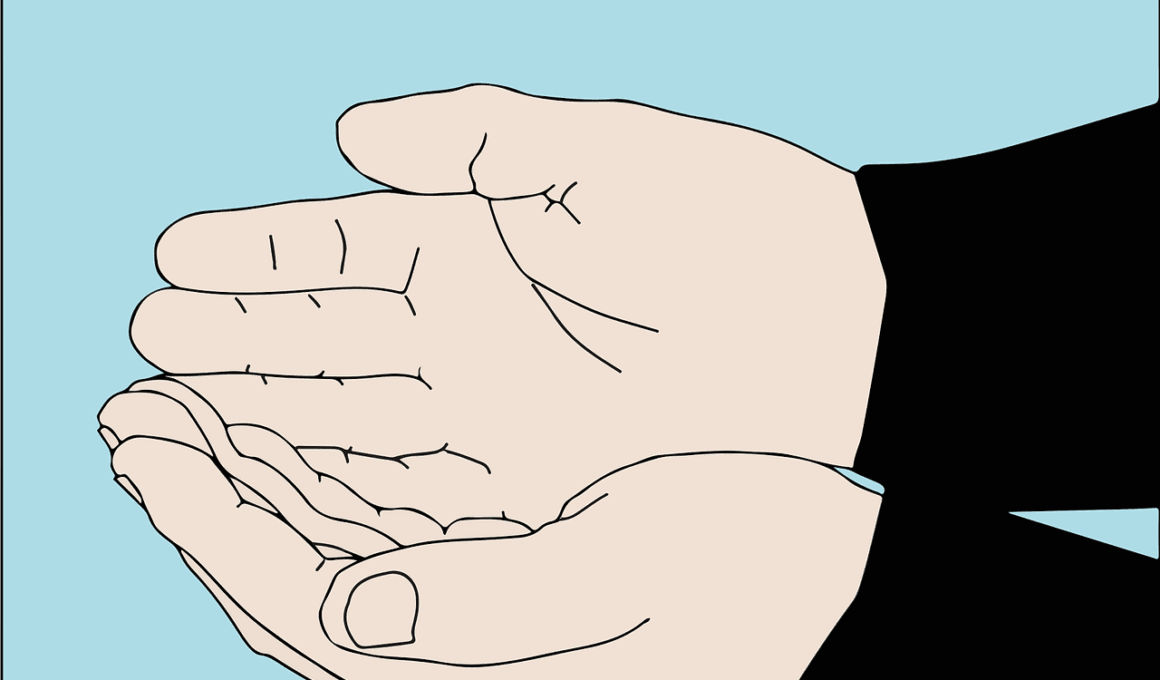How to Effectively Use Hand Signals in Dog Obedience Training
Hand signals in dog training are essential tools that facilitate communication without relying on audible commands. Dogs, being visual learners, often respond better to visual cues than to vocal instructions. The hand signal approach combines the use of both to create a more effective training method. One key benefit of hand signals is that they help reinforce a dog’s understanding of commands. By pairing a specific visual gesture with a verbal command, you can strengthen the dog’s learning process. For instance, initially training your dog with both a ‘sit’ command while raising your hand can create a strong association. Over time, your dog will learn to respond to the hand signal alone. Practicing this method consistently, in various environments, will enhance your dog’s proficiency. Consider this method when training in noisy areas where verbal commands may not be effective. Being patient and consistent with the signals you use remains crucial. Ultimately, dogs appreciate clarity in communication, and using hand signals can provide this clarity during obedience training.
Fundamental Hand Signals for Training
Beginning with basic hand signals is an effective way to introduce your dog to this form of obedience training. These signals should be distinct and easy to remember, which aids in the dog’s learning process. Common hand signals include simple gestures like raising your arm for ‘sit’ and waving your hand for ‘come’. These visuals should be practiced consistently to ensure your dog associates them with the desired behavior. Repetition helps solidify these commands in your dog’s mind. When utilizing hands signals, maintain a positive and encouraging attitude towards your dog. Use treats to reinforce good behavior when your dog responds correctly to the hand signal given. Gradually phase out treats as the dog becomes more proficient. It’s essential to gradually increase the distance from which you present these signals. Starting close allows your dog to see the gesture clearly, and as they learn, you can increase the distance. Be sure to practice across different environments to help your dog remain focused regardless of distractions, establishing a solid basis for more advanced training.
Consistency in using hand signals is key to effective dog training. Every member of the household should use the same signals for commands, so the dog does not become confused by different gestures. This uniformity fosters a clearer understanding of what each command means. Consistency complements the association of hand signals with specific actions. When implementing new signals, always practice in short, frequent sessions. This approach keeps your dog engaged and attentive while learning. Short training sessions are more effective than long, drawn-out practices that can lead to frustration for both the owner and the dog. Additionally, ensure that your hands are always visible, as dogs can lose focus if your gestures are hidden or unclear. As you move forward, gradually introduce more complex commands by building on the initial signals learned. For example, once your dog has mastered ‘sit’, you can introduce a hand signal for ‘stay’. To solidify understanding, use positive reinforcement techniques such as praise or treats. With patience and dedication, your dog can master an array of commands through effective hand signals.
Challenges in Using Hand Signals
While hand signals are beneficial, certain challenges may arise during training. One potential issue is the dog’s inability to see the signals, especially in low visibility lighting or from a distance. To counter this, ensure you teach the signals in well-lit places and gradually transition to more challenging environments. Another challenge is the dog’s distractibility. Outside distractions can impede focus, so it’s important to practice in various locations before real-world implementation. Training within your home is a great start, but outdoor environments provide different challenges. If your dog becomes distracted, it is helpful to practice with a training partner or a friend. This strategy can help simulate real-world distractions, allowing the dog to learn to focus despite other stimuli in the environment. If necessary, use a leash to maintain control during training. Notably, be prepared for setbacks. Training is not always linear; some dogs take longer to master signals than others. Adapting your approach and being flexible will help maintain momentum in your dog’s learning journey.
Positive reinforcement plays a vital role when utilizing hand signals in obedience training. Rewards like treats or praise reinforce the correct responses and behaviors, making learning more enjoyable for your dog. The correlation between the completion of a task and the subsequent reward fosters a desire to follow commands. Timing is crucial; rewards should be given immediately after your dog obeys the hand signal. This immediate reinforcement helps the dog link the action with the signal. Furthermore, gradual fading of treats helps ensure the dog remains attentive to hand signals without reliance on food. By fostering a supportive, encouraging environment, your dog will learn to associate hand signals with positive experiences. Over time, the goal is for your dog to respond to the signals based purely on the command’s meaning rather than always needing a tangible reward. Such an approach creates a strong bond of trust and communication between you and your pet. To enhance training, consider participating in obedience classes that emphasize hand signals; these allow for socialization while reinforcing skills with expert guidance.
Maintaining Progress in Training
To ensure lasting success in training with hand signals, regular practice is essential. Consistency over time solidifies learned behaviors and commands, while periodic reinforcement sessions remain vital to reestablishing understanding. Incorporate hand signals into daily routines to make training feel less formal. For example, using a hand signal for ‘come’ when your dog approaches you during play further reinforces that signal in a natural context. Training should always include ample playtime, helping maintain a positive association with learning. Keep training sessions brief and enjoyable, focusing on quality over quantity. As your dog becomes more reliable, you can introduce new hand signals and commands while consistently practicing existing ones. Establishing a routine adds structure and predictability to training, thereby aiding your dog’s comprehension. Schedule practice sessions several times a week, adjusting intensities and environments to keep it engaging. Remember, training should evolve with your dog’s capabilities; regularly assess their progress and adapt as needed. By maintaining engagement through play and exploration, the bond and communication between you and your dog will strengthen significantly.
In conclusion, employing hand signals in dog obedience training enhances communication between you and your pet. Through effective use of hand signals, you fortify your dog’s learning and comprehension of commands. Starting with basic signals, ensuring consistency, and utilizing positive reinforcement are crucial components of this training strategy. Addressing challenges such as visibility and distractions will further smooth the path to proficiency. Regular practice and integrating hand signals into daily routines not only keeps training fresh but also helps build a strong bond between you and your furry companion. Lastly, while this method may require patience and dedication, the rewards of having a well-trained dog that responds reliably to visual cues outweigh the challenges encountered during the training process. With commitment, you and your dog can master an array of commands that enhances your experiences together, ultimately contributing to a fulfilling and enriching relationship.


